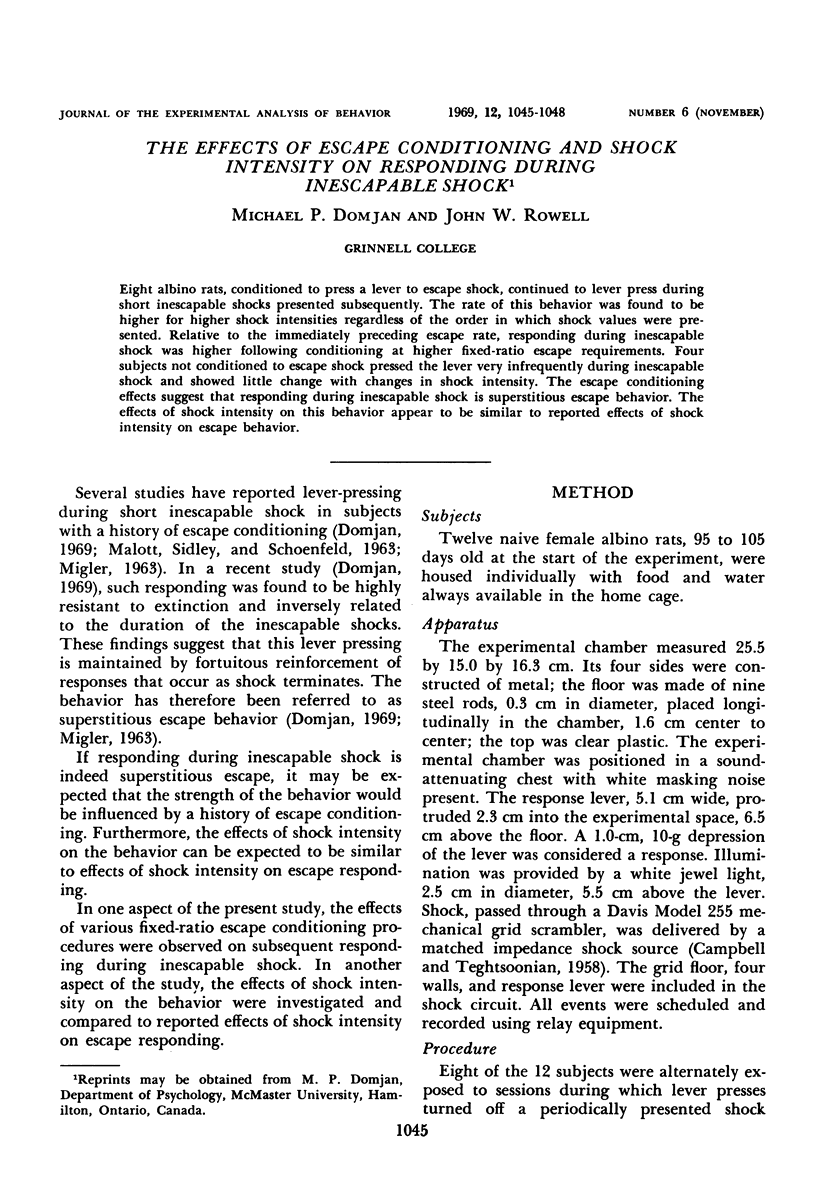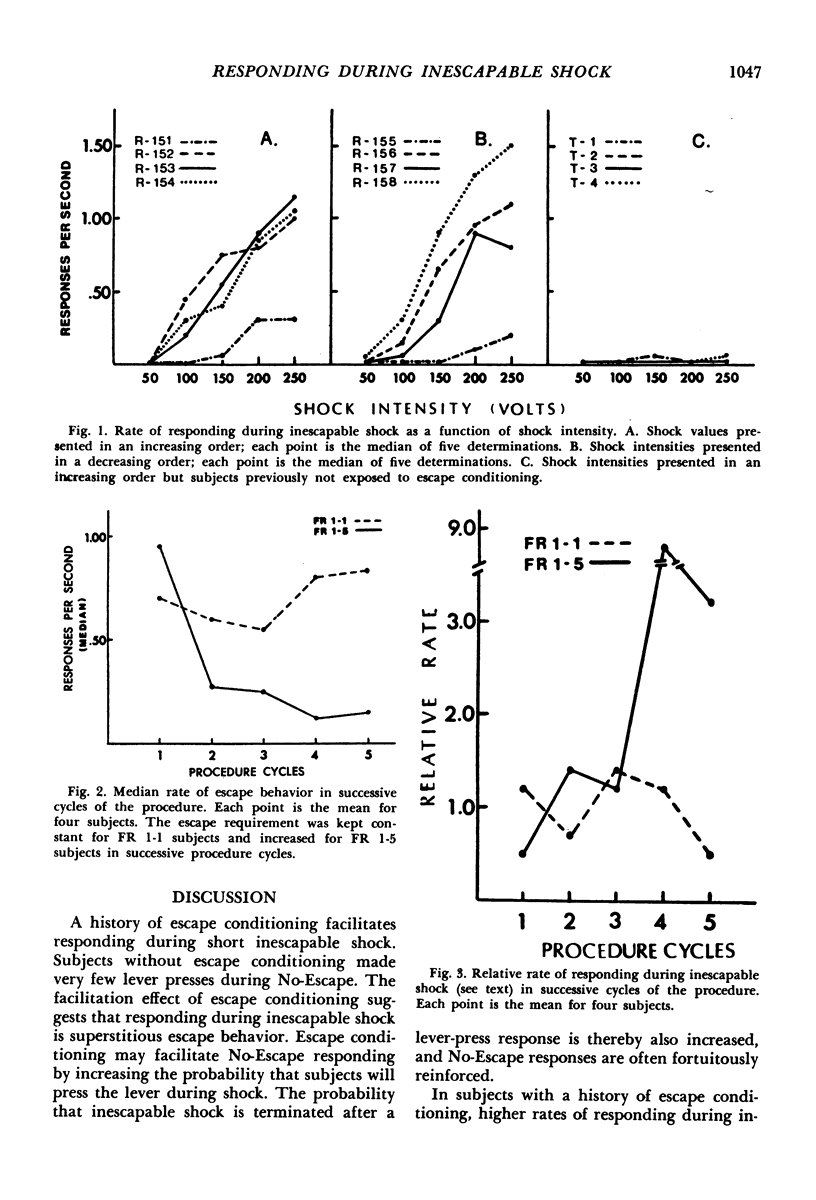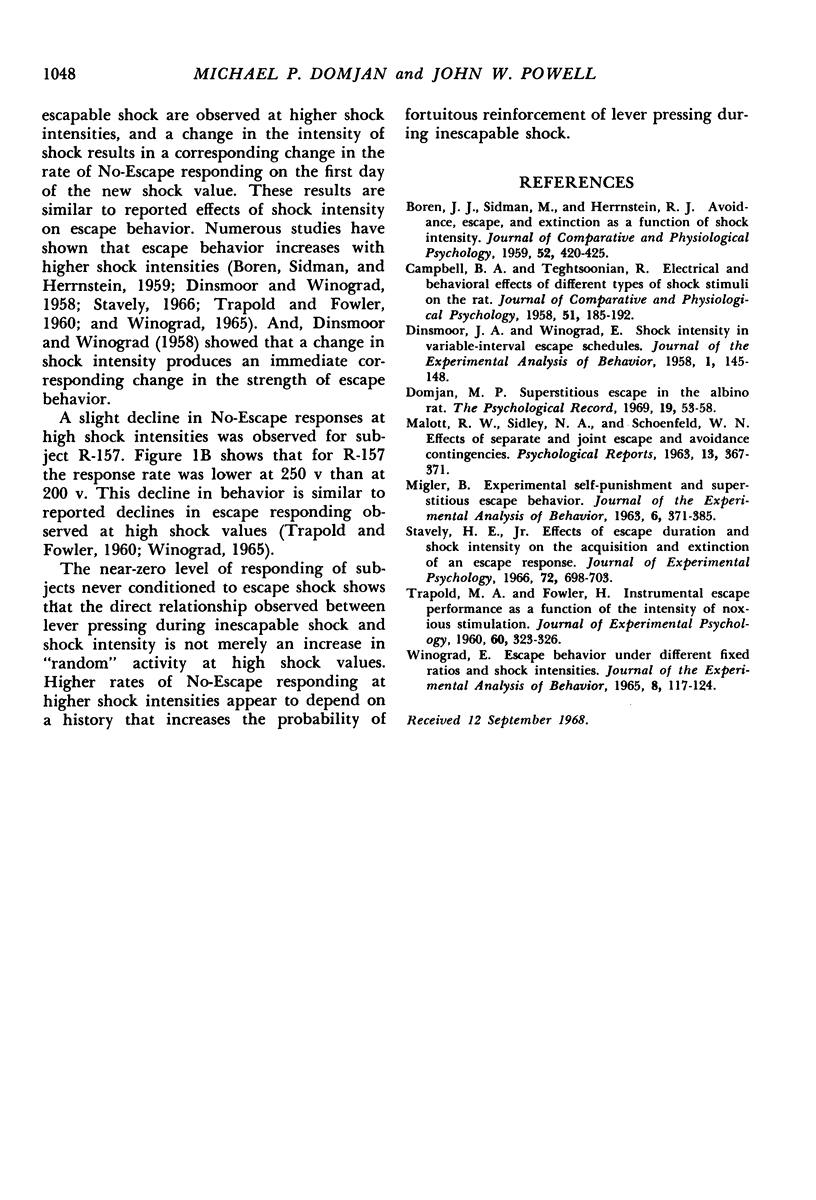Abstract
Eight albino rats, conditioned to press a lever to escape shock, continued to lever press during short inescapable shocks presented subsequently. The rate of this behavior was found to be higher for higher shock intensities regardless of the order in which shock values were presented. Relative to the immediately preceding escape rate, responding during inescapable shock was higher following conditioning at higher fixed-ratio escape requirements. Four subjects not conditioned to escape shock pressed the lever very infrequently during inescapable shock and showed little change with changes in shock intensity. The escape conditioning effects suggest that responding during inescapable shock is superstitious escape behavior. The effects of shock intensity on this behavior appear to be similar to reported effects of shock intensity on escape behavior.
Full text
PDF



Selected References
These references are in PubMed. This may not be the complete list of references from this article.
- BOREN J. J., SIDMAN M., HERRNSTEIN R. J. Avoidance, escape, and extinction as functions of shock intensity. J Comp Physiol Psychol. 1959 Aug;52:420–426. doi: 10.1037/h0042727. [DOI] [PubMed] [Google Scholar]
- CAMPBELL B. A., TEGHTSOONIAN R. Electrical and behavioral effects of different types of shock stimuli on the rat. J Comp Physiol Psychol. 1958 Apr;51(2):185–192. doi: 10.1037/h0043856. [DOI] [PubMed] [Google Scholar]
- Dinsmoor J. A., Winograd E. Shock Intensity in Variable-interval Escape Schedules. J Exp Anal Behav. 1958 Apr;1(2):145–148. doi: 10.1901/jeab.1958.1-145. [DOI] [PMC free article] [PubMed] [Google Scholar]
- MIGLER B. Experimental self-punishment and superstitious escape behavior. J Exp Anal Behav. 1963 Jul;6:371–385. doi: 10.1901/jeab.1963.6-371. [DOI] [PMC free article] [PubMed] [Google Scholar]
- Stavely H. E., Jr Effect of escape duration and shock intensity on the acquisition and extinction of an escape response. J Exp Psychol. 1966 Nov;72(5):698–703. doi: 10.1037/h0023799. [DOI] [PubMed] [Google Scholar]
- TRAPOLD M. A. Instrumental escape performance as a function of the intensity of noxious stimulation. J Exp Psychol. 1960 Nov;60:323–326. doi: 10.1037/h0040576. [DOI] [PubMed] [Google Scholar]
- WINOGRAD E. ESCAPE BEHAVIOR UNDER DIFFERENT FIXED RATIOS AND SHOCK INTENSITIES. J Exp Anal Behav. 1965 Mar;8:117–124. doi: 10.1901/jeab.1965.8-117. [DOI] [PMC free article] [PubMed] [Google Scholar]


